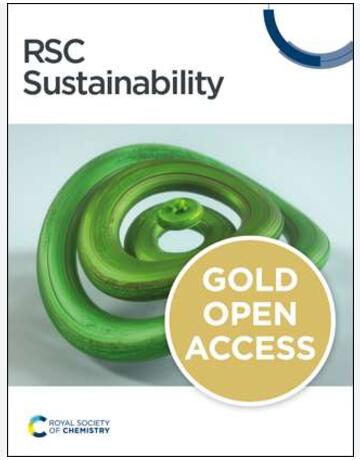Mechanism of Carbon Monoxide (CO) Generation and Potential Human Health Hazard during Mechanized Tunnel Driving in Organic-Rich Rocks: Field and Laboratory Study
IF 3.3
3区 环境科学与生态学
Q2 ENVIRONMENTAL SCIENCES
引用次数: 0
Abstract
The monitoring of carbon emissions is increasingly becoming a sustainability issue worldwide. Despite being largely unnoticed, the toxic gas carbon monoxide (CO) is ubiquitous in mechanized tunnel driving, but the individual sources, release and enrichment mechanisms are often unknown. In this study, the generation of CO from organic matter containing sedimentary rocks was investigated during mechanized tunnel driving and by reacting claystone and sandstone with 10 mM NaCl solutions for 2 months at 70 °C and 140 °C. The mineralogical and geochemical evolution of the solids and fluids was assessed by CO measurements and the XRD, DTA, TOC, IC and ICP-OES methods. The CO concentration in the atmosphere reached up to 1920 ppm (100 ppm on average) during tunnel driving, which is more than three times higher than the legal daily average dose for tunnellers, thus requiring occupational safety operations. Mineral-specific dissolution processes and the rapid decomposition of labile organic matter upon thermal alteration contributed to the liberation of CO and also carbon dioxide (CO2) from the host rocks. In mechanized tunnel driving, frictional heat and ‘cold’ combustion with temperatures reaching 50–70 °C at the drill head is an important mechanism for increased CO and CO2 generation, especially during drilling in sedimentary rocks containing significant amounts of OM and when the ventilation of the tunnel atmosphere and air mixing are limited. Under such conditions, human health damage due to CO exposure (HHDCO) can be 30 times higher compared to tunnel outlets, where CO is emitted from traffic.富有机质岩石中机械化隧道掘进过程中一氧化碳 (CO) 的生成机理及对人类健康的潜在危害:现场和实验室研究
碳排放监测正日益成为全球范围内的一个可持续发展问题。一氧化碳(CO)这种有毒气体在隧道机械化行驶过程中无处不在,但其来源、释放和富集机制却往往不为人知。本研究调查了在隧道机械化掘进过程中,通过在 70 °C 和 140 °C 温度下将粘土岩和砂岩与 10 mM NaCl 溶液反应 2 个月,从含有有机物的沉积岩中产生一氧化碳的情况。通过 CO 测量和 XRD、DTA、TOC、IC 和 ICP-OES 方法评估了固体和流体的矿物学和地球化学演变。在隧道开挖过程中,大气中的一氧化碳浓度高达 1920 ppm(平均 100 ppm),比隧道工人的法定日平均剂量高出三倍多,因此需要进行职业安全操作。特定矿物的溶解过程和热蚀作用下易变有机物的快速分解,导致二氧化碳和二氧化碳(CO2)从母岩中释放出来。在机械化隧道掘进过程中,摩擦热和 "冷 "燃烧(钻头温度达到 50-70 °C)是一氧化碳和二氧化碳生成增加的重要机制,尤其是在含有大量有机物的沉积岩中钻进时,以及在隧道大气通风和空气混合受到限制的情况下。在这种条件下,与隧道出口相比,因接触一氧化碳(HHDCO)而对人体健康造成的损害可能要高出 30 倍,因为隧道出口处的一氧化碳是由交通排放的。
本文章由计算机程序翻译,如有差异,请以英文原文为准。
求助全文
约1分钟内获得全文
求助全文
来源期刊

Sustainability
ENVIRONMENTAL SCIENCES-ENVIRONMENTAL SCIENCES
CiteScore
6.80
自引率
20.50%
发文量
14120
审稿时长
17.72 days
期刊介绍:
Sustainability (ISSN 2071-1050) is an international and cross-disciplinary scholarly, open access journal of environmental, cultural, economic and social sustainability of human beings, which provides an advanced forum for studies related to sustainability and sustainable development. It publishes reviews, regular research papers, communications and short notes, and there is no restriction on the length of the papers. Our aim is to encourage scientists to publish their experimental and theoretical research relating to natural sciences, social sciences and humanities in as much detail as possible in order to promote scientific predictions and impact assessments of global change and development. Full experimental and methodical details must be provided so that the results can be reproduced.
 求助内容:
求助内容: 应助结果提醒方式:
应助结果提醒方式:


